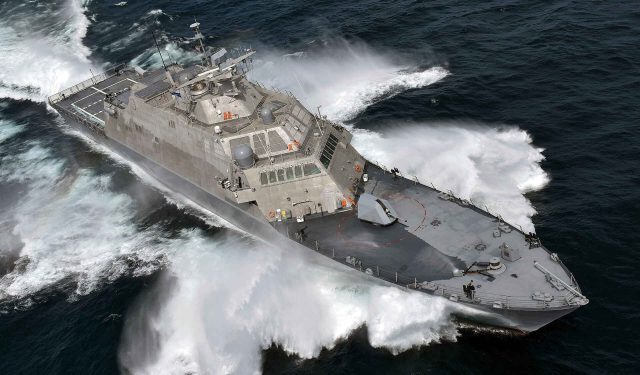The US Navy has announced the attainment of initial operational capability (IOC) for the mine countermeasures (MCM) mission package and AN/AQS-20 sonar mine detection sets, marking a step forward in the Navy’s ability to conduct mine countermeasures operations.
The MCM mission package has been designed to integrate a suite of unmanned maritime systems and sensors, enabling it to neutralize mines in the littorals and increase the host vessel’s distance from the threat area.
When equipped with the MCM MP, an LCS or a suitable vessel can perform detect-to-engage operations, including hunting, neutralizing, and sweeping mines using sensors and weapons that are deployed from the MCM Unmanned Surface Vehicle (USV), an MH-60S multi-mission helicopter, and other associated support equipment.
The AN/AQS-20 is a system used for identifying and locating underwater mines, which consists of sensors housed in an underwater towed body that includes the Wideband Forward-Looking Sonar (WBFLS), two multi-function Side Look Synthetic Aperture Sonars (MFSLS), and Digital Gap Fill Sonar (DGFS) to detect, classify, and locate targets, while the integration of the Electro-Optic Identification (EOID) sensor enhances its capability even further.
This system is deployed from the Mine Countermeasures (MCM) Unmanned Surface Vehicle (USV), which is similar to the Unmanned Influence Sweep System (UISS) that attained Initial Operational Capability (IOC) in July 2022.
“Achieving IOC of the entire mine countermeasures mission package is the result of rigorous testing and evaluation of each component of the package and then integrating the systems and the mission to ensure the fleet is receiving the best MCM capabilities possible,” said Rear Adm. Casey Moton, program executive officer. “This is also a critical step in the Navy’s progress towards the hybrid fleet described in Force Design 2045 by providing a modular MCM capability that leverages unmanned technologies to prosecute mines.”
Brig. Gen. Marcus Annibale, the director of Expeditionary Warfare (OPNAV N95) and resource sponsor for mine warfare, emphasized the significance of the IOC declaration.
“Fielding the MCM MP on Independence-Class LCS is one of the top priorities for OPNAV N95 in order to deliver the capability to the warfighters forward in the fleet. Mine countermeasures are a critical enabler for the joint force and in safeguarding sea-lanes for the global commons.” He also added, “This new capability includes advanced technologies in unmanned systems, allowing greater standoff from the LCS platform as the ‘mothership,’ as well as providing greater precision and capacity while keeping our personnel out of the minefield.”
The declaration of the MCM MP IOC is the result of a comprehensive IOT&E of the complete mission package, which included testing of the AN/AQS-20 system on the USS Cincinnati (LCS 20) during the fall of 2022.
The PEO Unmanned and Small Combatants, responsible for the design, development, construction, maintenance, and modernization of the Navy’s growing range of unmanned maritime systems, mine warfare systems, and small surface combatants, oversaw the testing process.



























